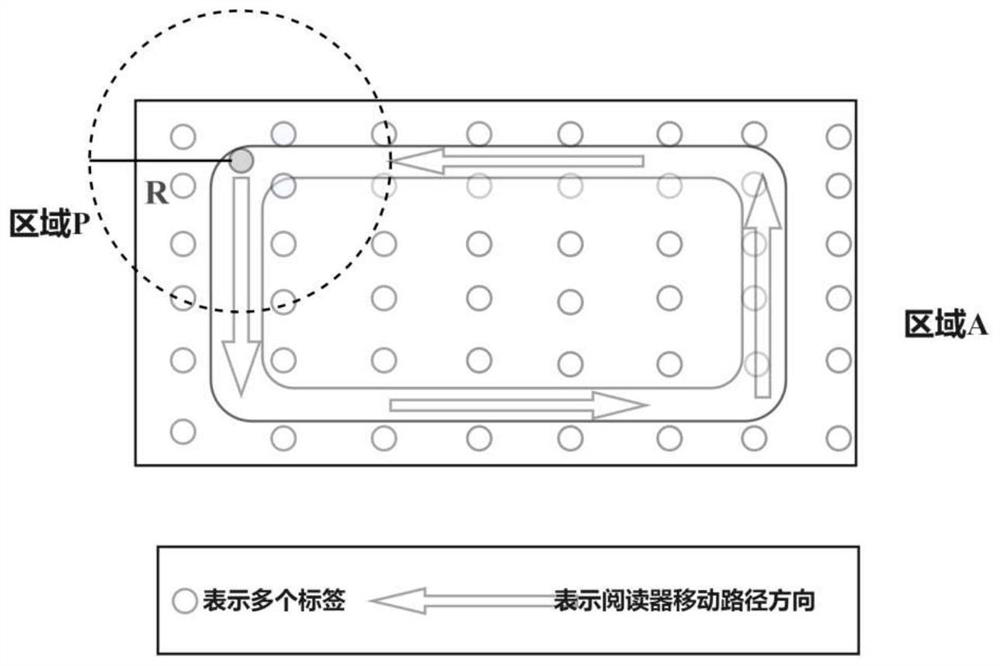DFSA and binary algorithm combined single-reader RFID tag identification method
A technology of RFID tags and DFSA, which is applied in the direction of instruments, computing, and computer components, etc., can solve the problems of wasting time, high energy consumption of readers, and low throughput rate of RFID systems, so as to solve the problem of serious missed reading of tags and reduce energy consumption , the effect of reducing the search time
- Summary
- Abstract
- Description
- Claims
- Application Information
AI Technical Summary
Problems solved by technology
Method used
Image
Examples
Embodiment 1
[0033] Embodiment 1: as Figure 1-3 As shown, a single reader identification RFID tag method combined with DFSA and binary algorithm, the scene diagram of a single reader identifying RFID tags in small and medium warehouses, as shown in figure 1 shown.
[0034] N tags to be identified are randomly distributed in a small and medium-sized warehouse A, the reader radius is R, and the recognition range is P. The warehouse manager walks one or more circles along a fixed path with the reader.
[0035] The specific steps of the method are as follows image 3 Shown:
[0036] Step1, such as figure 2 As shown, turn on the reader, the reader sends a query command, and then the single-handed reader identifies the tags along a fixed path. First, the Chebyshev inequality is used to predict the number of tags to be tested in the area, and the reader selects different tags according to the number of tags. The frame length is used to identify the tags, the number of tags to be recognized ...
Embodiment 2
[0059] Embodiment 2, a kind of DFSA and the single reader identification RFID label method that binary algorithm combines, concrete steps are as follows:
[0060] Step1. The tags to be identified are randomly distributed in the area, and the reader is ready to start working;
[0061] The passive tag used in the present invention relies on the electromagnetic energy sent by the reader to work, has no memory, and can repeatedly identify tags that appear repeatedly in the area.
[0062] Step2. The warehouse manager turns on the reader in the area to be identified, which means the identification starts. The manager holds the single reader along a fixed path to identify the tags in the warehouse.
[0063] Step2.1. The reader sends a start command, and uses Chebyshev's inequality to predict the number of tags to be tested in the area according to the recognition situation;
[0064] Step2.2. According to the number of different tags, use the identification frame with an unfixed leng...
PUM
 Login to View More
Login to View More Abstract
Description
Claims
Application Information
 Login to View More
Login to View More - R&D Engineer
- R&D Manager
- IP Professional
- Industry Leading Data Capabilities
- Powerful AI technology
- Patent DNA Extraction
Browse by: Latest US Patents, China's latest patents, Technical Efficacy Thesaurus, Application Domain, Technology Topic, Popular Technical Reports.
© 2024 PatSnap. All rights reserved.Legal|Privacy policy|Modern Slavery Act Transparency Statement|Sitemap|About US| Contact US: help@patsnap.com










